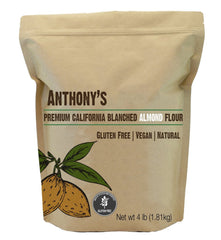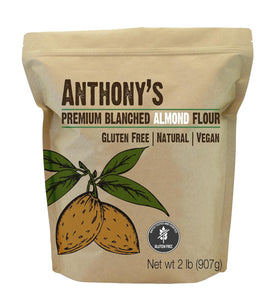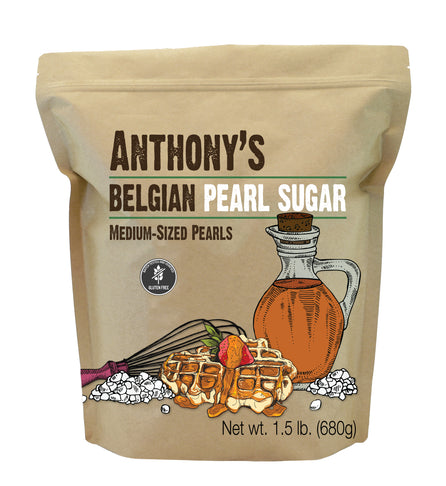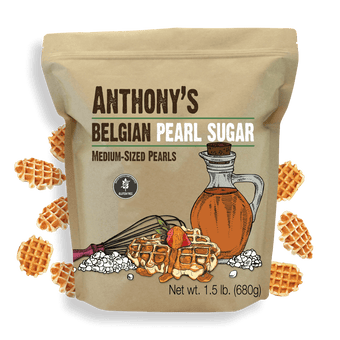Blanched almond flour is a wheat flour alternative that’s all natural and delicious. It’s made purely from almonds and has become one of the best choices for a healthy type of baking flour.
If you’ve taken the time to browse our products, you’ve probably noticed that we provide two types of almond flour: blanched almond flour and unblanched almond flour. But, what’s the difference? And...what does blanched even mean?
To put it simply, blanched means that the almond skin has been removed from the nut. Raw almonds typically have a layer of red-brown skin enclosing the nut. The skin provides a different texture, depending on whether or not it remains in the flour. Blanched almond flour will contain no almond skin. Unblanched almond flour uses the entire almond – skin and all.
How Is an Almond Blanched?
To blanch an almond, simply drop it into boiling water. After a minute or two has passed, drain the almond with cold water. The skin should slide off easily. Once the skin is off, the almond is considered blanched.
What Are the Differences Between the Two Types of Flours?
When it comes to blanched Vs. unblanched almond flour, there are significant differences between the two. This can be seen in their weight, appearance, and texture – depending on how the flour is used.
Unblanched Almond Flour
Because unblanched almonds have their skin on, the almonds remain a red-brown color. This will cause the ground up flour to have the same red-brown flecks. The color can cause pastries or dishes to have a different appearance, which can be a con for some. However, many don’t mind the slight color differences and even find it much more appealing. Many also claim that unblanched almond flour is heavier than its blanched flour counterpart.
Unblanched almond-flour is also all-natural and has many health benefits. Almonds have been proven to improve skin, boost energy, and contains all sorts of vitamins and minerals. Nevertheless, according to Breaking the Vicious Cycle, unblanched almonds can also cause digestive problems for some (due to their fibrous nature).
Blanched Almond Flour

Blanched almond flour is typically preferred for its fine, smooth, and fluffy texture. Blanched almond flour is lighter and is much better for creating pastries. Because the almonds are white in color (having had the skin removed), the ground up flour will not make a difference to the appearance of your dish. Blanched almond flour also carries the same nutritional benefits as unblanched almond flour.
What Are Some Good Uses for Each Type of Almond Flour?
Almond flour (whether blanched or unblanched) is great for a variety of different recipes. It’s great for cakes, cookies, pie crust, pasta, and more. Almond flour has a slightly sweeter and nuttier flavor than regular flour, which can add a savory taste to many dishes. It’s also loaded with heart-healthy omega-3s, vitamin E, and other types of great vitamins and minerals.
To purchase some of our great unblanched or blanched almond flour, check out our products! Our almond flour is guaranteed to be gluten-free, vegan, and all natural. It’s also guaranteed to be a great addition to your dishes!













